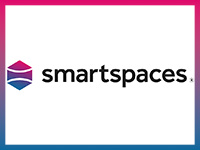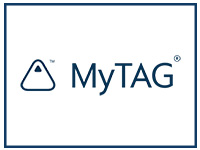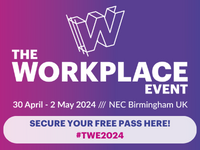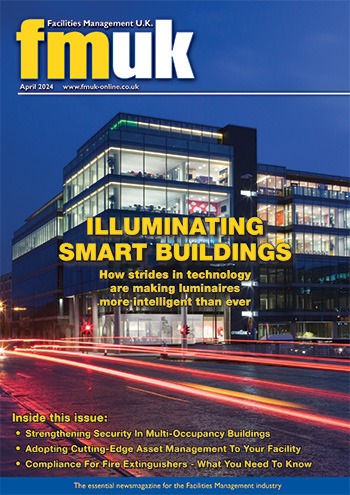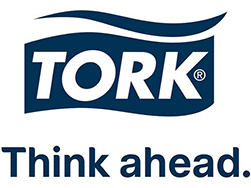Reopening Retail: How Digital Twin Technology Enables Social Distancing And Safe Shopping
 By James Morris-Manuel, EMEA Managing Director at Matterport.
By James Morris-Manuel, EMEA Managing Director at Matterport.
The coronavirus pandemic has proven to be a catalyst for a seismic change across the business world. The retail industry felt the effects of COVID-19 more than most, with non-essential brick-and-mortar stores closed as lockdowns forced shoppers to stay at home. At the beginning of the pandemic, the headlines were filled with empty shelves and panic buying, but this has now shifted to store closures and job losses. Yet hope is on the horizon, with the distribution of multiple vaccines and Boris Johnson’s latest announcement that retailers can reopen their doors from 12 April. Most recently, we have seen promises of government grants to support struggling stores, as Rishi Sunak plans to offer 700,000 retailers and other businesses grants as part of a £5billion rescue scheme to prevent mass bankruptcies.
Many retailers are now rejoicing and eager to reopen to the public. But Matterport research shows that if retailers want footfall to return to their stores, they will need to reassure consumers that shops are safe and healthy environments. In fact, 66% of respondents in an international survey cited “crowded stores” as their top concern, while 36% were most concerned by “the fear of getting sick”’. This highlights the importance of retailers using different approaches to the traditional promotion and marketing activities of a pre-COVID-19 world to entice customers and restore shopper confidence.
Facilities Managers: the unsung heroes in a post coronavirus retail world
This is where the retail facilities manager comes into play, whose role went through something of an unexpected transformation last year. Responsible for the maintenance of retail stores, and most importantly its people, facilities managers needed to take immediate action towards implementing the correct health and safety guidelines and precautions when COVID-19 first hit. Suddenly, strategically-placed hand sanitation stations and floor graphics marking 2-metre safety distances became the all important differentiator between entering a store and continuing along the high street. Shelves and POS displays needed to be reconfigured to allow for one-way systems throughout stores, and entirely new considerations for managing traffic flow and crowd control had to be factored into store layouts.
Facilities managers also became the leaders of hygiene and health initiatives within the store. Having a carefully coordinated approach to help mitigate the risks for the retailer and its staff, and also allay customer concerns became paramount. More importantly, the new store set-up and safety procedures had to be implemented consistently across multiple branches, simultaneously. With responsibilities for planning and redesigning high-density spaces to ensure a smooth shopping experience during an age of intense uncertainty and disruption, the retail facilities manager emerged, rather unexpectedly as perhaps one of the most important people on the team - virtually overnight.
Boris Johnson’s ‘Road to Recovery’ has indicated that the retail industry could open its doors again in just a few months' time, with non-essential retail businesses eligible for grants of up to £6,000 to help them reopen. As the world begins to return to a ‘new-normal’, facilities managers are grappling with the best ways to maintain social distancing to reassure housebound consumers longing for the familiarity and joy of an in-person shopping experience. But they must also make in-person shopping a COVID-19 safe space - both now, and in the longer term. Innovative technology presents enormous opportunities to address these challenges and design shopping experiences that protect not only customers, but also employees, staging teams, and all other relevant stakeholders. Facilities managers can leverage digital twin technology to drive these positive changes in the shopping environment - not only for that all-important reopening date, but also to stay one step ahead in the long term, for future resilience.
3D digital twins: a reimagined future of retail
With new technologies continuing to evolve, there are great possibilities to transform the customer experience across online channels and brick-and-mortar facilities. Capturing immersive digital twins of retail stores is one such example - an innovative solution that preserves what consumers consider “the best parts of a retail experience” while still creating new possibilities that signpost a reimagined future of shopping. Many retail facilities managers are already pivoting their business model to stay relevant in an increasingly digitised landscape by using 3D experiences - not only as a way to continue to thrive while physical stores have been closed, but also to map out safe routes to reopening their doors when lockdown lifts.
Going forward, 3D digital twins can be used to help plan and facilitate shopper routes and the flow of customers through a store, as well as access to facilities in larger spaces and determining details like where sanitisation stations should be placed. The scans are to-scale, so shoppers can check ahead of time, from any device, for assurance that social distancing measures are implemented effectively and confidence that they can return to stores safely.
Facilities managers can also quickly capture 3D virtual tours of in-store equipment, inventory, product selection and placement, and POS displays, enabling them to create a consistent brand experience across different locations. Using this visual data, they can plan, implement, and manage floor layouts and merchandising more efficiently than ever before, and share these across their operations in a matter of minutes, meaning shops can quickly reopen with consistent designs and products, at scale, in any future lockdown event. As well as the significant time this saves, there is also an important sustainability benefit to be realised, as teams can collaborate remotely to achieve results rather than needing to meet on the shop floor, which dramatically reduces travel and therefore emissions.
Bridging the divide between in-person and online shopping experiences
The impact of COVID-19 on the retail industry has served as a catalyst for changes already underway in the sector. It’s evident that consumer preferences were fuelling a digital evolution long before the coronavirus pandemic; and it’s now time for retail facilities managers to embrace new technologies and ways to survive and thrive. Digital twins represent a compelling space between physical spaces and online shopping, where consumers interact with the places they know and love and where merchants offer new products and experiences in exciting and interesting ways. Customers can now virtually walk around their favourite physical stores from the comfort of their own homes.
But digital twins are also critical assets for managing each physical space through mapping safe guidelines which can be quickly cascaded across all branch locations, delivering remote employee training prior to opening, and providing consumers with the reassurance that retailers are committed to providing safe shopping experiences. Successful retailers will be those whose omnichannel environment seamlessly unites their brick-and-mortar locations with their eCommerce platforms. 3D capture technology has proven to be an asset not only when redesigning retail spaces to make them safer, but also as a means to provide customers with the visual assurance that the right measures and precautions are being taken on these premises to restore shopper confidence.
Over the years, a common misconception is that digital innovation will contribute to the decline of brick-and-mortar stores. However, 3D technology is more likely to form a strong connection between eCommerce and brick-and-mortar, solidifying the relevance of physical retail spaces in the shopping landscape of the future. Using 3D scanning technology, retail facilities managers can create a digital twin of their entire premises in a few minutes. As social distancing measures start to ease, digital twin technology will allow customers to visualise and browse the retail environments that they have longed for during lockdown, and allow shoppers and retailers alike to see how stores are safely reopening.
Click the article to enlarge it.
















